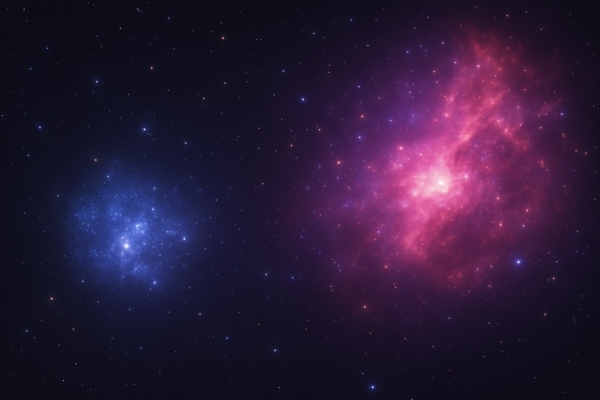Under the serene starry sky, a storm is unfolding that we cannot see. Astronomers are astonished to discover that one of our Milky Way Galaxy’s closest companion galaxies, the Small Magellanic Cloud (SMC), is currently undergoing intense “tugging” from its larger neighbor, the Large Magellanic Cloud (LMC), gradually heading towards a fragmented fate.
This revelation comes not from science fiction but from the latest research published in The Astrophysical Journal Supplement Series on Thursday, April 10th. Scientists utilized data provided by the European Space Agency’s Gaia satellite to track the movements of over 7,000 “superstars” within the SMC. They were surprised to find that these stars are moving in opposite directions, as if being torn apart by some invisible cosmic force.
“At first, we thought the data was incorrect,” said astronomer Kengo Tachihara from Nagoya University in Japan. “But after repeated validations, the results are beyond doubt, and this discovery has greatly shocked us.”
For a long time, the SMC and LMC have been like a pair of dancing galactic companions, orbiting the Milky Way Galaxy hand in hand. However, this cosmic waltz seems to be gradually spiraling out of control. Research shows that stars on both sides of the SMC are moving in opposite directions – some moving closer to the LMC while others are moving away, exhibiting clear signs of “tidal stretching.”
What is even more surprising is that these high-mass stars do not orbit the center of the galaxy like young stars within the Milky Way Galaxy. Instead, they resemble a disrupted mass of air, moving aimlessly in a disorganized manner. This indicates that the internal structure of the SMC may have already been severely disturbed by the gravitational pull of the LMC, disrupting its original dynamic equilibrium.
These observational results also challenge scientists’ current understanding of the mass distribution, motion mechanisms, and interactive history between SMC, LMC, and the Milky Way Galaxy, suggesting that previous interpretations may have been oversimplified. The fate of the SMC is still uncertain, but this interstellar tug-of-war it is experiencing is undoubtedly profoundly altering its future trajectory.
This research also provides crucial clues for unraveling how galaxies formed and evolved in the early universe. Due to its low metal content and relatively weaker gravitational potential, the SMC likely exhibits characteristics similar to typical galaxies in the early universe. Therefore, observing the interaction between the SMC and LMC will help astronomers understand the shaping process of galaxies over billions of years.
“We cannot overlook our Milky Way Galaxy from a God’s-eye view,” Tachihara added. “But the SMC and LMC provide us with this opportunity. They allow us, for the first time at such a detailed level, to observe the movement behavior of stars in an entire galaxy, enabling us to deepen our understanding of the link between star formation and galactic dynamics.”

